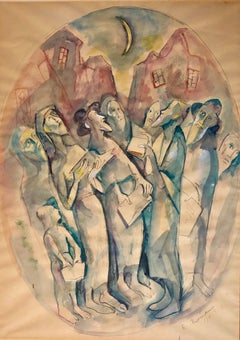
Tugboat in New York Harbour
View Similar Items
Reginald MarshTugboat in New York Harbour1938
1938
About the Item
- Creator:Reginald Marsh (1898-1954, American)
- Creation Year:1938
- Dimensions:Height: 14 in (35.56 cm)Width: 20 in (50.8 cm)Depth: 3 in (7.62 cm)
- Medium:
- Movement & Style:
- Condition:
- Gallery Location:Saratoga Springs, NY
- Reference Number:1stDibs: LU1702460242
Reginald Marsh
Reginald Marsh was born in Paris, France, in 1898. His family returned to the U.S. in 1900, settling in New Jersey. The Marsh family moved to New Rochelle, New York, in 1914, where Reginald attended the Riverview Military Academy until 1915. Marsh spent his senior year at the Lawrenceville School where he drew for the school's annual. Marsh then attended Yale School of Art in 1916–20 where he became the star illustrator for The Yale Record and, later, its art editor. In his newspaper work Marsh exhibited a graphic skill and a gift for pictorial humor.
On graduating from Yale in 1920, Marsh moved to New York City where he supported himself as a freelance illustrator for newspapers and magazines, such as Vanity Fair and Harper's Bazaar. In 1922, Marsh became a staff artist for The Daily News, first drawing city life and then a column of vaudeville illustrations. When The New Yorker began in 1925, Marsh became a staff member, contributing through 1931. These illustration jobs provided Marsh with a good income and a great amount of free time, which allowed him to study painting at the Art Students League on and off through the 1920s with Kenneth Hayes Miller, John Sloan and George Luks. When Marsh began to paint in earnest in 1923, he joined the Whitney Studio Club, where he had one-man exhibitions in 1924 and 1928.
In the early 1920s Marsh made his first trip to Coney Island on a project for Vanity Fair. He was instantly drawn to the raucous environment of extremes, capturing the boardwalks, beaches and sideshows in his sketchbooks. Marsh often remained in New York for the summer to spend time at Coney Island. The rest of the year Marsh painted industrial subjects. He also enjoyed recording the physical and social life of a newly commercialized city, focusing on taxi-dance halls, burlesque, Coney Island, subways and the Bowery.
In 1929 Marsh took a studio near Union Square in New York where he remained for most of his life, roaming the streets with his sketchbook. The same sketches he worked up for his newspaper and magazine illustrations found their way into his paintings.
The 1930s and 1940s were very successful for Marsh. He exhibited in most of the annual exhibitions of contemporary American art at the Whitney Museum of American Art (1924–54), the Corcoran Gallery of Art (1932–57), the Pennsylvania Academy of the Fine Arts (1932–52), the Art Institute of Chicago (1928–49) and the National Academy of Design (1927–49). He also had many one-man exhibitions at the Frank K. Rehn Galleries in New York.
Marsh began teaching at the Art Students League in 1935 where he soon became one of the most popular teachers. In the spring of 1954, Marsh was chosen to receive the gold medal of the National Institute of Arts and Letters, an extremely high award in the American cultural world.
Find original Reginald Marsh prints, drawings and paintings on 1stDibs.
- Red House (The Hoffman House)By Harry Leith-RossLocated in Saratoga Springs, NYHarry Leith-Ross (American, 1886 - 1973) Red House (Hoffman House) Oil on canvas, weathered wood 20th century frame 35” x 30” Signed lower right, ‘Leith-Ross’ Exhibition sticker v...Category
Mid-20th Century American Modern Landscape Paintings
MaterialsCanvas, Oil
Price Upon Request - PortraitBy Joseph PolletLocated in Saratoga Springs, NYSigned lower right. Description A portrait of a stylized young man dressed in a blue coat with a ruffled white shirt in an artistic background suggest that it may be a portrait of a young actor or performer. About the artist. Joseph Pollet was an important member of the Woodstock Art Colony. He emigrated to NYC in 1911 from Albbruck, Germany (born in 1897) and at age 21 had a promising career as an advertising copywriter. While working, he studied painting and his landscapes were immediately successful in NYC galleries. He studied at the Art Student's League with John Sloan, Robert Henri, and Homer Boss...Category
1950s American Modern Figurative Paintings
MaterialsOil, Canvas
$6,000 - Pair of African American PortraitsBy Josef PresserLocated in Saratoga Springs, NYJosef Presser (Poland, United States, 1907 - 1967) “Pair of African American Portraits” 9 x 7” each, Gouache on paper (One signed) circa 1945 About Josef Presser was born in Lublin, Poland. He studied at the Boston Museum of Fine Arts School, in Europe, and with Bryant Baker...Category
1940s Modern Figurative Paintings
MaterialsGouache
- Wedding in JerusalemBy Zvi RaphaeliLocated in Saratoga Springs, NYSigned lower left. Provenance: Private Collection, Boca Raton, Florida Zwi Raphaeli was an Israeli impressionist painter. He studied in Paris at the Beaux-Arts and the Bezalel Acad...Category
20th Century Impressionist Figurative Paintings
MaterialsGouache, Paper
- Morrisinia, New York in the BronxBy William Rickarby MillerLocated in Saratoga Springs, NYSigned lower left, titled and dated Born in Staindrop, County Durham, England, he was a portrait and landscape painter, especially appreciated for watercolor painting, which he sold...Category
1850s Hudson River School Landscape Paintings
MaterialsWatercolor, Paper
- SeasideBy Gordon GrantLocated in Saratoga Springs, NYSigned lower left. Born in San Francisco, CA on July 7, 1875, Gordon Grant grew up in San Francisco and at age 12 sailed around the Horn to London, England to study art at the Heath...Category
1940s Realist Landscape Paintings
MaterialsWatercolor
$4,500
- Suzanna and the EldersBy Ben ShahnLocated in Miami, FLA modern interpretation of the biblical story Suzanna and the Elders. Signed lower right Ink and wash on paper The Downtown Gallery Felix Landau Gallery Ernest Brown & Phillips, Ltd...Category
1940s American Modern Portrait Paintings
MaterialsWatercolor, Ink, Gouache, Archival Paper
- Untitled [Abstraction]By George L.K. MorrisLocated in New York, NYGouache on paper, 18 7/8 x 14 3/4 in. Signed (at lower right): Morris; (with monogram, on the back): GLKM [monogram] / 1932 [sic] Executed circa late 1940s A passionate advocate of abstract art during the 1930s and 1940s, George L. K. Morris was active as a painter, sculptor, editor, and critic. An erudite man with an internationalist point of view, Morris eschewed the social, political, and figural concerns that preoccupied so many artists of Depression-era America, believing that painters should focus their attention on the beauty, refinement, and simplicity of pure form instead. His goal, he said, was “to wedge the expression further and further into the confines of the canvas until every shape takes on a spatial meaning” (as quoted in Ward Jackson, “George L. K. Morris: Forty Years of Abstract Art,” Art Journal 32 [Winter 1972–73], p. 150). Born into an affluent family in New York City, Morris was a descendent of General Lewis Morris, a signer of the Declaration of Independence. From 1918 until 1924, he attended the Groton School in Connecticut, studying classics and art. He continued to focus on literature and art while attending Yale University (1924–28), an experience that prepared him well for his future activity as an artist-critic. After graduating in 1928, Morris studied at the Art Students League of New York, working under the realist painters John Sloan and Kenneth Hayes Miller, as well as Jan Matulka, the only modernist on the faculty. In the spring of 1929, Morris traveled to Paris with Albert E. Gallatin, a family friend and fellow painter who introduced him to leading members of the Parisian avant-garde, including Jean Arp, Pablo Picasso, Georges Braque, Jean Hélion, and Piet Mondrian. Morris also took classes at the Académie Moderne, studying under Fernand Léger and Amédée Ozenfant, important exponents of Synthetic Cubism who influenced his aesthetic development. Indeed, after experimenting with the simplified forms of Modernism for a few years, Morris moved on to abstraction by 1934, adopting a hard-edged, geometric approach inspired by Leger’s cubist style and the biomorphic shapes of Arp and Joan Miró. Following his return to New York in 1930, Morris built a white-walled, open-spaced studio (inspired by that of Ozenfant, which had been designed by Le Corbusier) on the grounds of Brockhurst, his parents’ 46-acre estate in Lenox, Massachusetts. In 1935, he married the painter and collagist Estelle “Suzy...Category
1940s American Modern Abstract Paintings
MaterialsPaper, Gouache
- Modernist Watercolor Painting Judaica Kiddush Levana Blessing New MoonBy Emanuel Glicenstein RomanoLocated in Surfside, FLGenre: Judaic prayer scene Subject: Landscape Medium: watercolor Surface: Paper Country: United States EMANUEL ROMANO Rome, Italy, b. 1897, d. 1984 Emanuel Glicenstein Romano was born in Rome, September 23, 1897. His father Henryk Glicenstein was a sculptor and was living in Rome with his wife Helena (born Hirszenberg) when Emanuel was born his father obtained Italian citizenship and adopted the name Enrico. Emanuel was brought up in Italy, Switzerland, Germany, England and Poland. In 1926 Emanuel and his father sailed for New York. They briefly visited Chicago. Romano's sister, Beatrice, and mother only joined them in New York years later. Romano changed his name on his arrival to America and some have erroneously speculated that this was to avoid antisemitic anti Jewish discrimination. In truth, as the son of a highly-regarded artist, Romano changed his name to ensure that any success or recognition he would later attain, would be the result of nothing other than his own merit as an artist, and not on account of his father's fame. In 1936 Romano was worked for the Federal Art Project creating murals. During and immediately after World War II, Romano created a series of allegorical works depicting graphic holocaust images that were held closely by the family until after his passing. One of these works is now on permanent display in the Florida Holocaust Museum in St. Petersburg Florida. Emanuel's father died in 1942 in a car accident before they could realize their shared dream of visiting Israel. In 1944 Romano, having completed his degree at the Pennsylvania Academy of Fine Arts and the Art Institute of Chicago, began teaching at the City College of New York. Romano moved to Safed, Israel in 1953 and established an art museum in his father's memory, the Glicentein Museum. COLLECTIONS Indianapolis Museum of Art Metropolitan Museum of Art Boston Fine Arts Museum Fogg Museum Musée Nacional de France Recently his work has been added to the Florida Holocaust Museum collection. His notable works include his holocaust themed allegorical paintings as well as portraits of Marianne Moore, his father and William Carlos Williams...Category
20th Century American Modern Figurative Paintings
MaterialsPaper, Watercolor
- Large Watercolor Painting John Groth, Men Wrestling, Esquire Magazine WPA ArtistBy John GrothLocated in Surfside, FLJohn August Groth (American, 1908-1988) "Wrestling Match," Watercolor painting, hand signed upper right and inscribed upper left, "Las Palmas Canary Islands Lucha Canary Wrestling". Framed Size: 21'' x 29'', 53 x 74 cm (sight); 28.5'' x 36.25'', 72 x 92 cm (frame). Depiction of a wrestling match in a city square. John August Groth (1908 - 1988) was an illustrator and art teacher. He gained recognition as a war correspondent-illustrator. He studies at the Art Institute of Chicago and at Art Students League with Todros Geller, Robert Brackman, Arnold Blanch and George Grosz. He was a member: Society of American Etchers; American Newspaper Guild; Society of Illustrators; Associate Member of the National Academy of Design; American Water Color Society. Positions : Art Director at Esquire 1933 - 1937, Parade Publications 1941 - 1944; War Correspondent for Chicago Sun 1944; American Legion Magazine 1945; Artist-Correspondent in Vietnam 1967.Teacher at Art Students LeagueHe was the first art director of Esquire Magazine and taught at the Art Students League, the Pratt Institute, and the Parsons School of Design. In 1940, he was included in an exhibition at MOMA, titled, "PM Competition: The Artist as Reporter." The exhibition included Philip Guston, Reginald Marsh, John Tworkov, John Heliker, Adolf Dehn, and Chet La More. Groth began sketching intently during the Great Depression after studying at the Art Institute of Chicago. Following the advice of an editor, he penned 100 sketches a day for years. He learned to increase his speed by listening to sports on the radio and sketching the action as fast as he could. "I would listen to the games on the radio at night, and sketch the plays. It made me very quick." His break came when Arnold Gingrich, an editor for Esquire magazine, approached him at an art show in Chicago and offered him a position. "The way (Arnold Gingrich) told it," John Groth says, "he found this barefoot, bearded kid in the park, and the next day made him art director of the world's leading men's fashion magazine. But I swear I was wearing shoes." Groth went on to work as a correspondent and illustrator for the Chicago Sun, Collier's, Sports Illustrated, and The Saturday Evening Post. He developed a passion for war zones. He covered six different wars and was one of the first correspondents in Paris after its liberation. "It is only at war that I feel complete... There, you meet all sort of men -- farmers, mechanics, college professors. It rains on them and it rains on you. The shells burst in the air, and you are there, too." He would make a splash when he beat out friend and rival, Ernest Hemingway, into Paris in 1944. Hemingway was writing for the Chicago Tribune and Groth for the Chicago Sun. Groth was in the first jeep into Paris and got the scoop. His headline read, "Yanks are in Paris!" Hemingway would later write about Groth's technique. “None of us understood the sort of shorthand he sketched in. The men would look at the sketches and see just a lot of lines. It was a great pleasure to find what fine drawings they were when we got to see them. Groth went on to illustrate such classic books as: A Christmas Carol, All Quiet on the Western Front, The Grapes of Wrath, The War Prayer, and Gone with the Wind. Deborah Churchman described Groth's work in a 1980 Washington Post article: "Groth's pictures center on the day-to-day life of people caught in terrifying circumstances -- armies occupying cities, soldiers sweeping roads for land mines, bullfighters facing death." Bernie Schonfeld, a photographer for Life Magazine said of Groth, "John is one of the gentlest people in the world, and he always gets himself into the wildest hell hole." He joined the First Congress of American Artists Against War and Fascism in 1936, along with Stuart Davis, Peter Blume...Category
Mid-20th Century American Modern Figurative Paintings
MaterialsPaper, Watercolor
- Large American Modernist Watercolor Painting Irises Bernard Chaet ExpressionistBy Bernard ChaetLocated in Surfside, FLHand signed Irises (purple and yellow flowers) 30 X 37 framed. 20.5 X 26.5 sheet without frame. Bernard Chaet (born 1924, Boston, MA - 2012) was an American artist; Chaet is known for his colorful, dynamic modernist paintings and masterful draftsmanship, his association with the Boston Expressionists, and his 40-year career as a Professor of Painting at Yale University. His works also include watercolors and prints. In 1994, he was named a National Academician by the National Academy of Design. Chaet was instrumental in transforming Yale’s traditional art program into one with a more modernist approach that gained national prominence. Chaet melded landscape and abstraction in a traditional established by Vincent Van Gogh, Georges Seurat, Edvard Munch, Piet Mondrian, and Ferdinand Hodler. His own tenure began in 1951 at Yale, where he worked closely with Josef Albers to revamp Yale’s art program. Between 1959 and 1962 he was the chair of what was then called the Yale Department of Art of the School of Fine Arts — prior to becoming one of the independent professional schools at Yale in 1973. Chaet taught painting and drawing and mentored generations of emerging talents. Chaet was the author of the 1970 textbook “The Art of Drawing” and “An Artist’s Notebook 1979,” both of which have since been reissued several times. In the latter book, alongside examples of work by his favorite artists, are student drawings by Yale graduates such as Robert Birmelin, Michael Mazur and Eugene Baguskas. Born in Boston, Massachusetts, in 1924, Chaet studied at the School of the Museum of Fine Arts in Boston and then earned a B.A. at Tufts University. Known for his expressionist landscapes and still lifes, Chaet’s work has continuously been shown in galleries in his native Boston, in New York City, and around the country. In 2010, a retrospective of his seascapes was featured at the Cape Ann Historical Society in Gloucester, Massachusetts, where he had a home and a summer studio in nearby Rockport. His has also exhibited at David Findlay Gallery in New York and at Swarthmore College. Many of Chaet’s students went on to notable art careers, including Janet Fish, Chuck Close, and Richard Serra. His work is represented in the collections of the Brooklyn Museum, the Art Institute of Chicago, the Metropolitan Museum of Art in New York, the DeCordova Sculpture Park and Museum in Lincoln, Massachusetts, the Hirshhorn Museum and Sculpture Garden in Washington, D.C., the Museum of Fine Arts in Boston, the Yale University Art Gallery in New Haven, CT, and the Addison Gallery of American Art in Andover, MA. Chaet is the recipient of many awards including: the National Foundation of the Arts and Humanities, Sabbatical Grant in 1967-68, the National Academy of Fine Arts, Benjamin Altman Award in Painting in 1997, and the American Academy of Arts and Letters Jimmy Ernst Prize in 2001. Chaet was born and raised in the Dorchester neighborhood of Boston, MA. He completed a dual program at the Museum of Fine Arts, Boston—studying painting with Karl Zerbe—and Tufts University, graduating with a B.S. in 1949. Chaet is known for his association as a first generation Boston Expressionist. (along with Hyman Bloom and Jack Levine) Chaet was a contributing editor to Arts Magazine. In 1960 he published the book Artists At Work, which features in depths conversations with artists Pat Adams, Anni Albers, Josef Albers, Al Blaustein, Hyman Bloom, James Brooks, Robert Engman, Esther Geller, Seymour Lipton, Conrad Marca-Relli, Gabor Peterdi, Irwin Rubin, Elbert Weinberg...Category
1970s American Modern Still-life Paintings
MaterialsWatercolor, Gouache, Archival Paper
- Modernist Abstract Expressionist Watercolor Painting Bauhaus Weimar ArtistBy Pawel KontnyLocated in Surfside, FLAbstract watercolor composition bearing the influence of the earlier color-block compositions of Paul Klee. Pawel August Kontny, (Polish-German-American artist) He was born in Laurahuette, Poland, in 1923, the son of a wealthy pastry shop owner. In 1939 he began studying architecture in Breslau where he was introduced to the European masters and to the work of some of the German Expressionists, soon afterward banned as "degenerate artists" and removed from museums throughout Germany by the Nazi regime. His studies were interrupted by World War II. Drafted into the German army, traveling in many countries as a soldier, he sketched various landscapes but in 1945, he was captured and held as a prisoner of war in Italy. After the war, he studied at the Union of Nuremberg Architects to help design buildings to replace ones destroyed in the war. He recorded his impressions of the local population and the landscapes through his watercolors and drawings. Pawel Kontny thereafter moved to Nuremberg, Germany, becoming a member of the Union of Nuremberg Architects and helping to rebuild the city's historic center. He soon decided to concentrate on his professional art career. He married Irmgard Laurer, a dancer with the Nuremberg Opera. Pavel Kontny 's career as an artist was launched with his participation in an all German exhibition, held at the Dusseldorf Museum in 1952. He held one-man shows in Germany, Switzerland and the United States. During his trip to the United States in 1960, Kontny became instantly enamored with Colorado, and decided to relocate to Cherry Hills with his wife and two children. He quickly established himself in the local art community, being affiliated for a time with Denver Art Galleries and Saks Galleries. His subject matter became the Southwest. During this time he received the Prestigious Gold Medal of the Art Academy of Rome. His extensive travel provided material for the paintings he did using his hallmark marble dust technique. he also worked equally in pastel, watercolor, charcoal and pencil-and-ink. in a style which merged abstraction and realist styles, influenced by Abstract Expressionist painting and South Western American landscapes. In the early 1960s he was one of only a few European-born professional artists in the state, a select group that included Herbert Bayer (1900-1985), a member of the prewar Bauhaus in Weimar and Dessau, Germany, and Roland Detre (1903-2001), a Hungarian modernist painter. As a Denver, Colorado resident, Pavel Kontny exhibited at galleries and museums throughout the United States, Germany and Japan. There, he was inspired by frequent trips to Native American pueblos in the Southwest, as well as by the study of the Plains Indians of Montana and Wyoming. Over the years Kontny had a number of students and generously helped young artist by hosting exhibitions at his Cherry Hills home. For many years he generously donated his paintings to support charitable causes in Denver. Influences during his European years included German pastelist C.O. Muller, German Informel painter Karl Dahmen and Swiss artist, Hans Erni. In the early 1950s his painting style showed the influence of the Die Brücke (The Bridge), a group of German expressionist artists formed in Dresden in 1905 who had a major impact on the evolution of modern art in the twentieth century in Germany. By the middle of the decade his style incorporated more referential abstraction and total abstraction, resulting in part from his study of Hans Hartung, a German artist based in Paris who exhibited his gestural abstract work in Germany. His work also bears the influence of Sam Francis. The American moon landing in 1969 inspired Paul Kontny...Category
Mid-20th Century American Modern Abstract Drawings and Watercolors
MaterialsWatercolor, Archival Paper

![Untitled [Abstraction]](https://a.1stdibscdn.com/george-lk-morris-1905-1975-american-paintings-untitled-abstraction-for-sale/a_23/1652214284908/APG_8941_unfr_master.jpg)
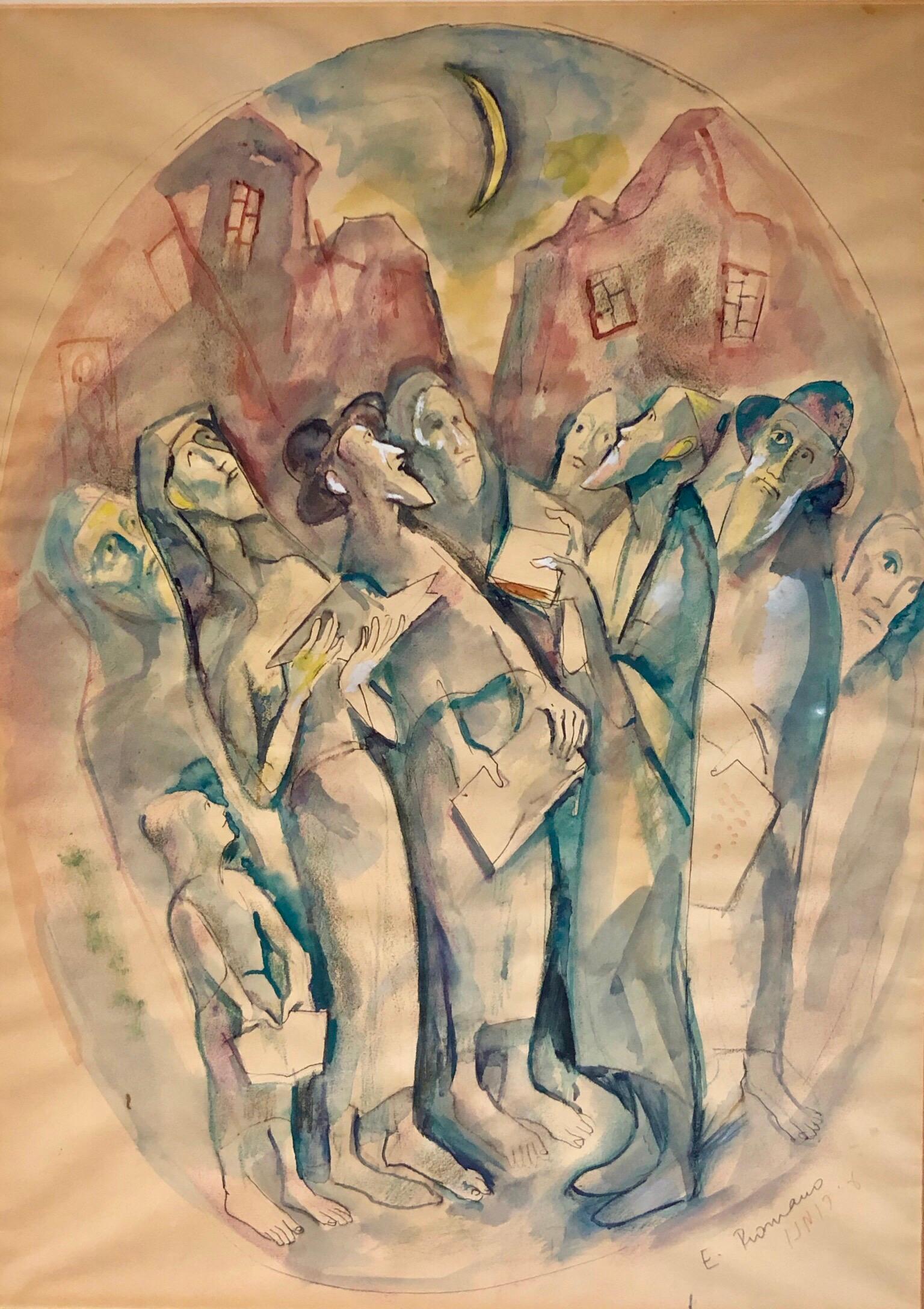

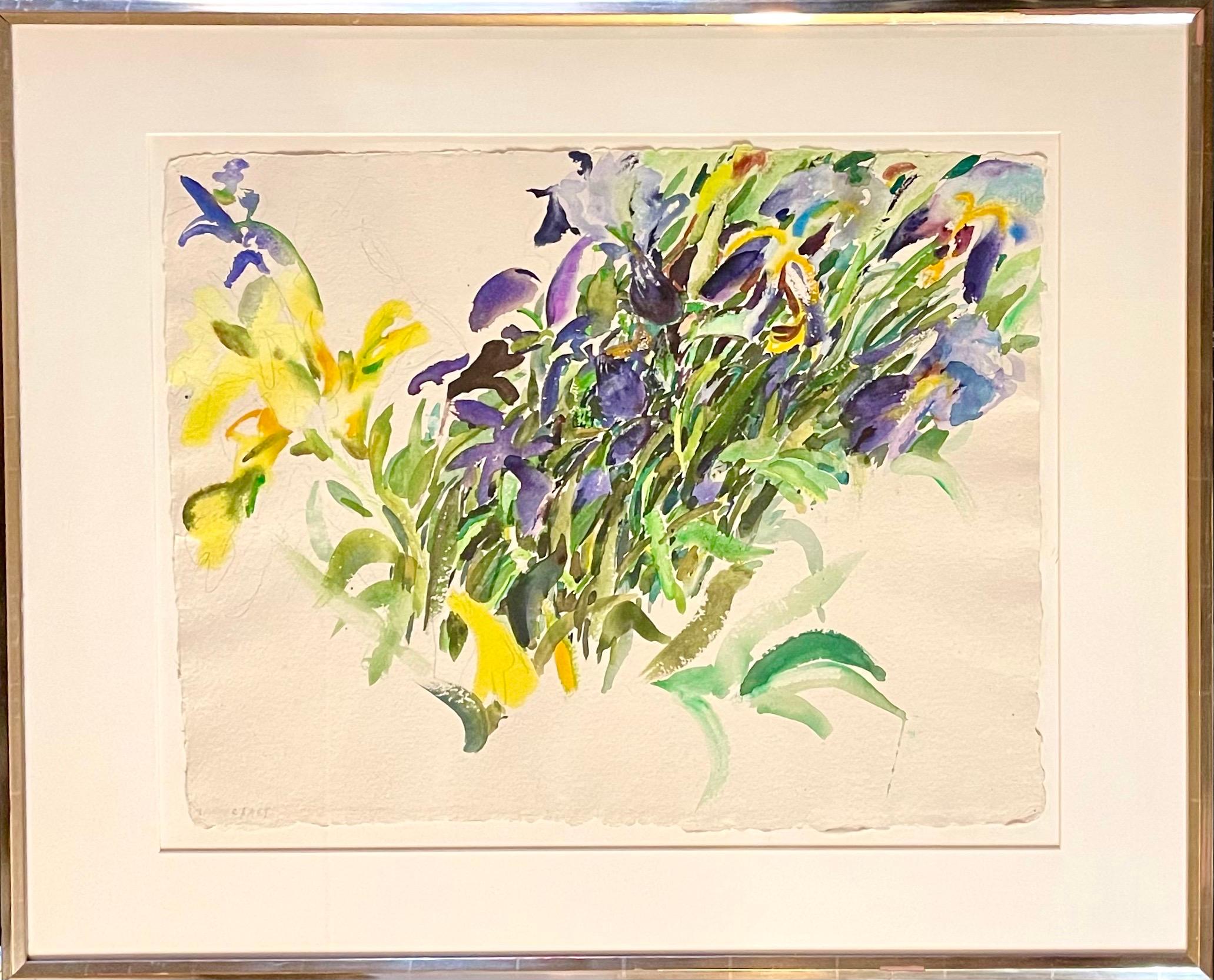
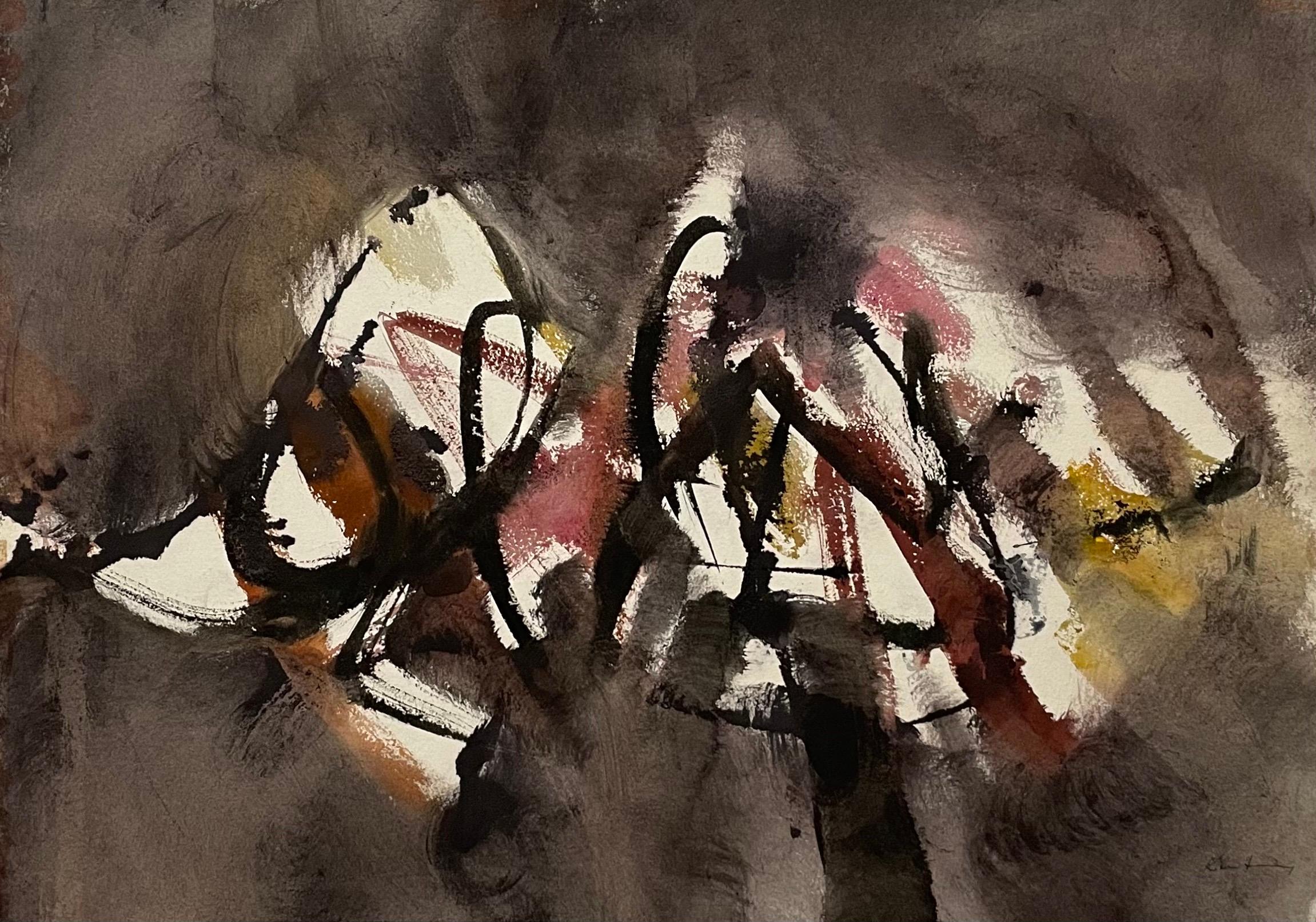
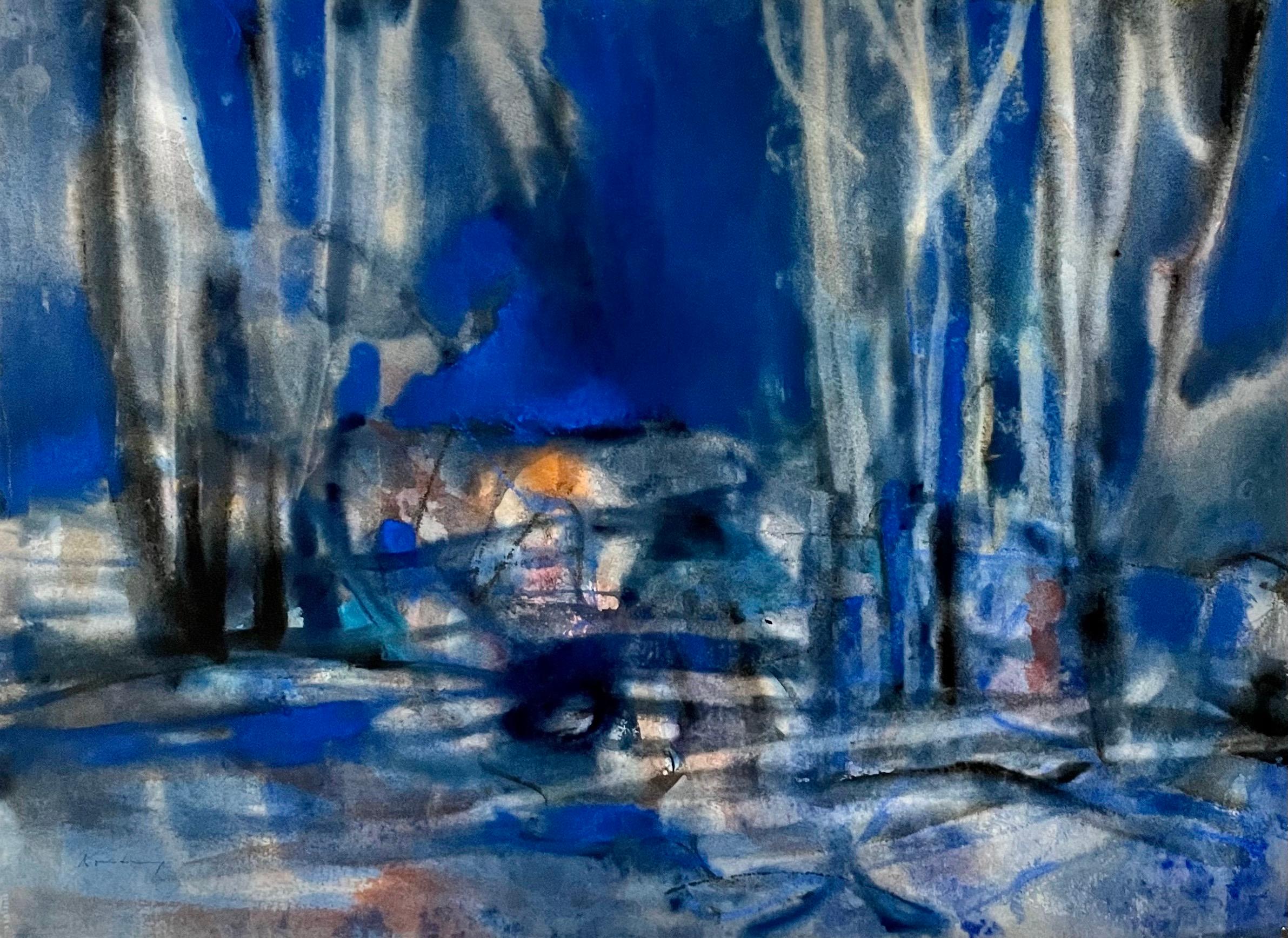
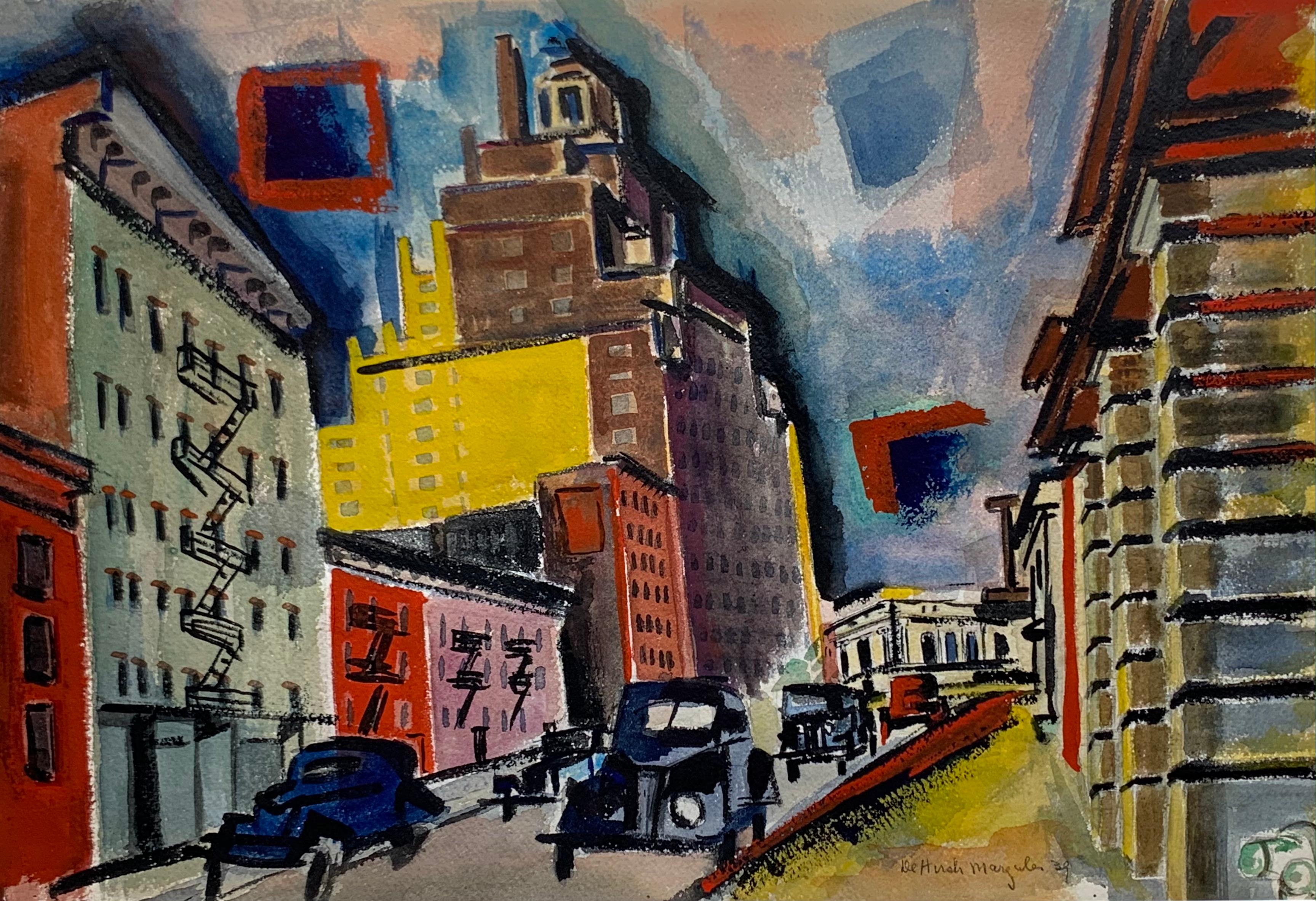
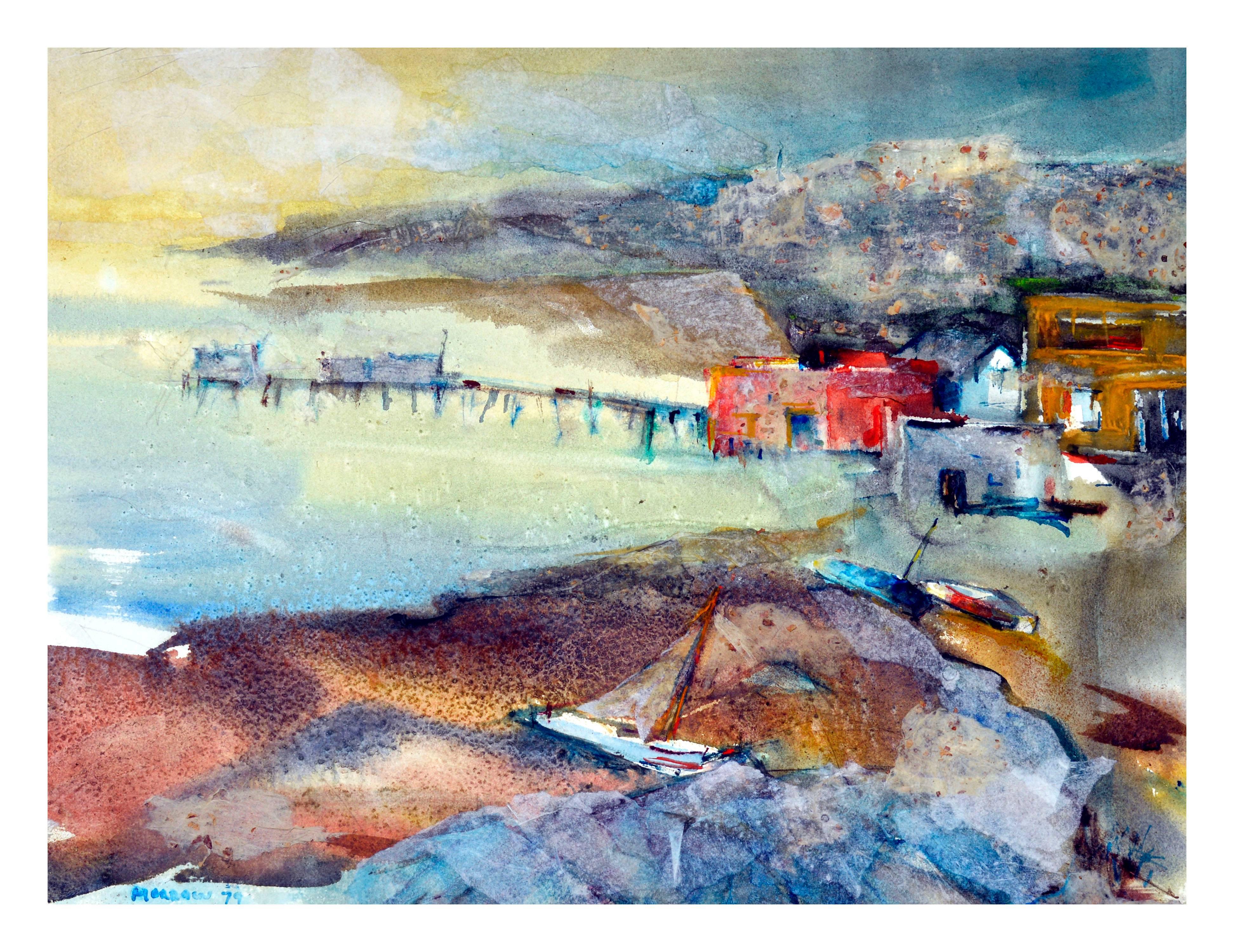

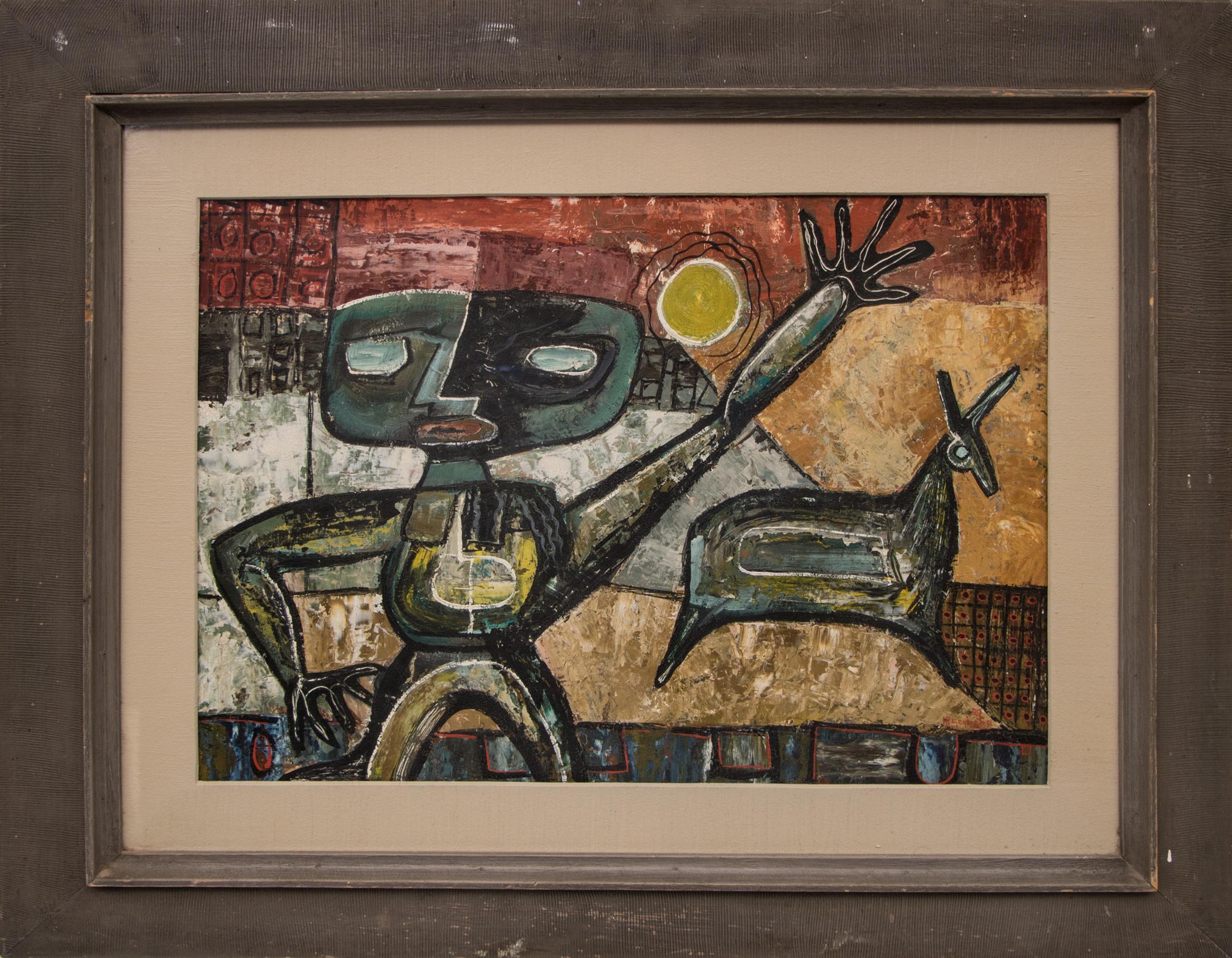
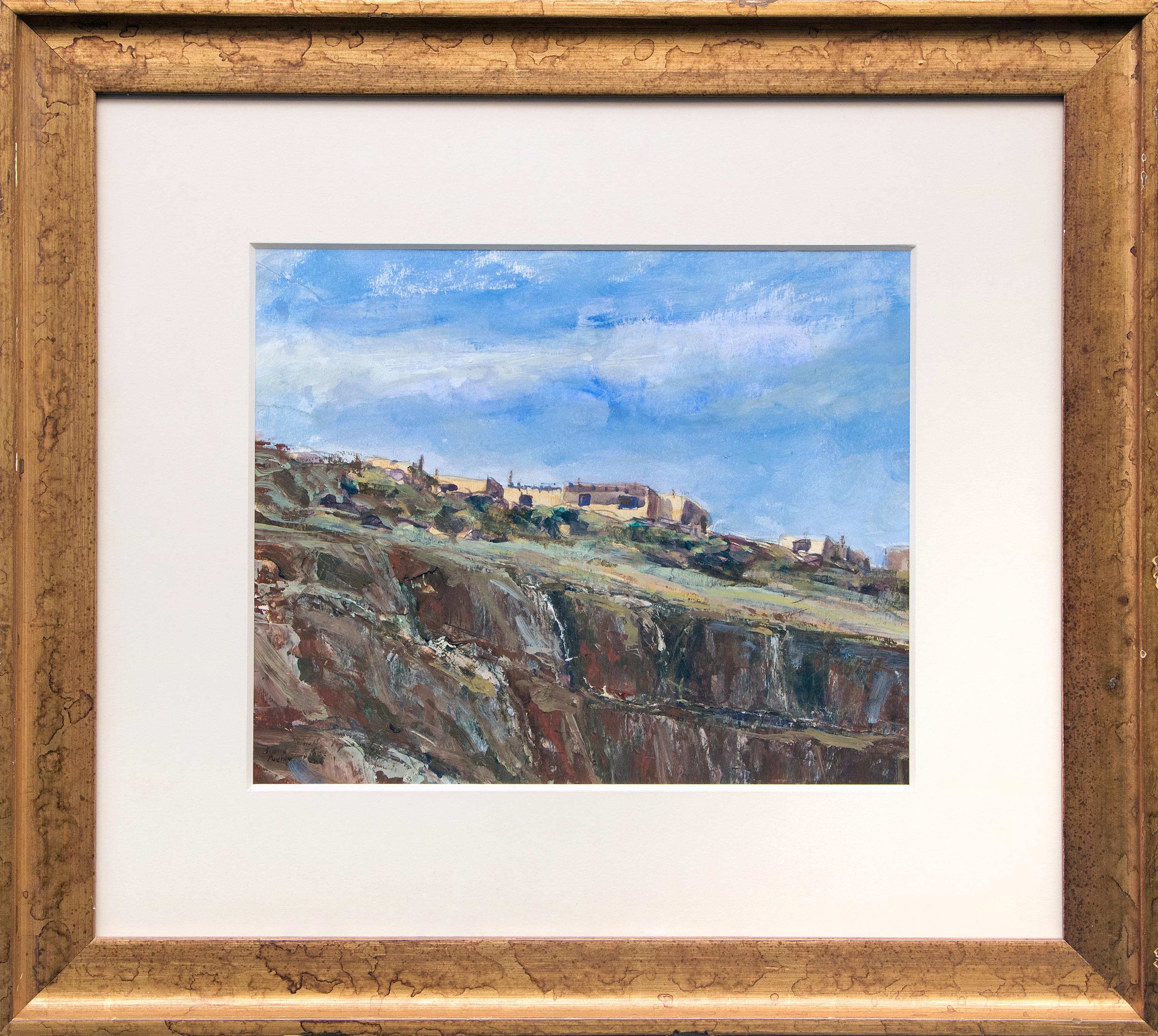


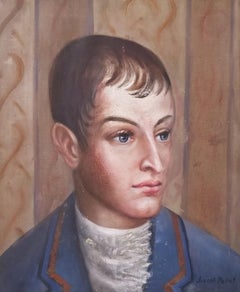

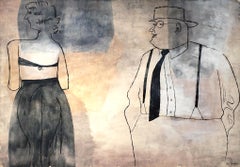
![Untitled [Abstraction]](https://a.1stdibscdn.com/george-lk-morris-1905-1975-american-paintings-untitled-abstraction-for-sale/a_23/1652214284908/APG_8941_unfr_master.jpg?width=240)
